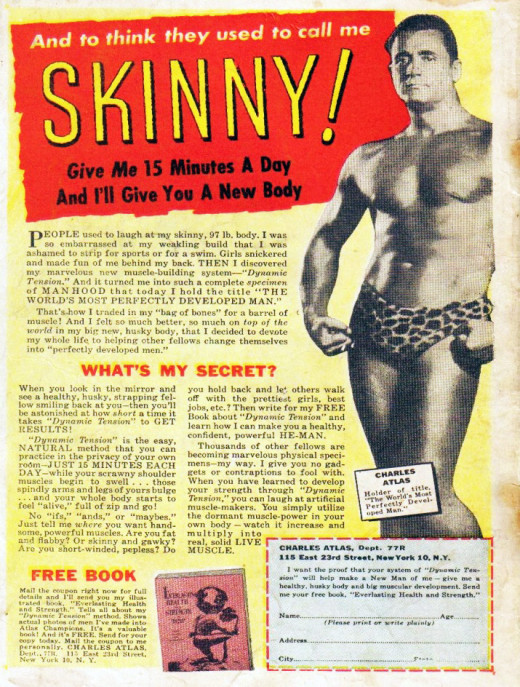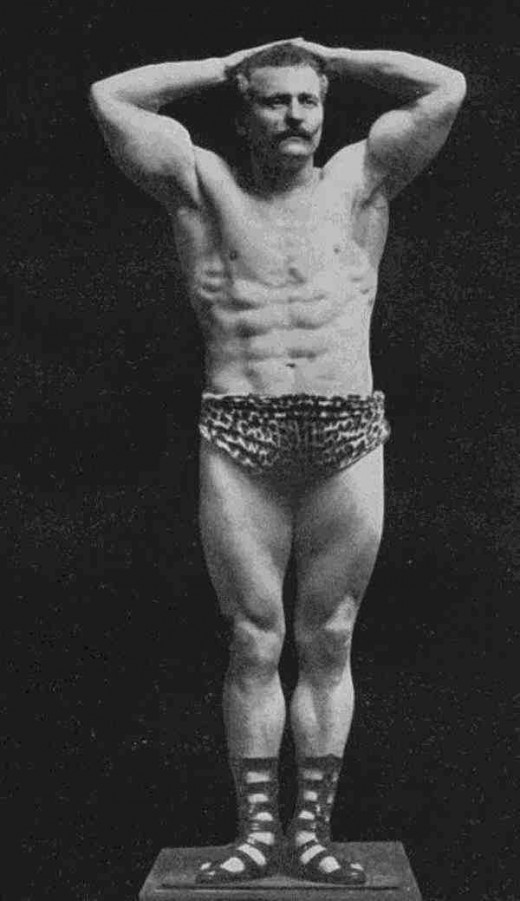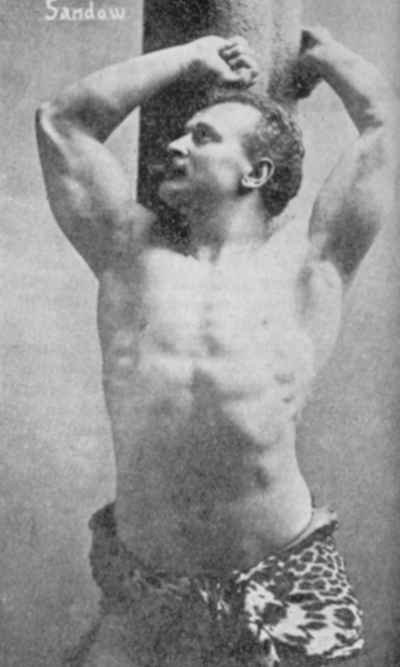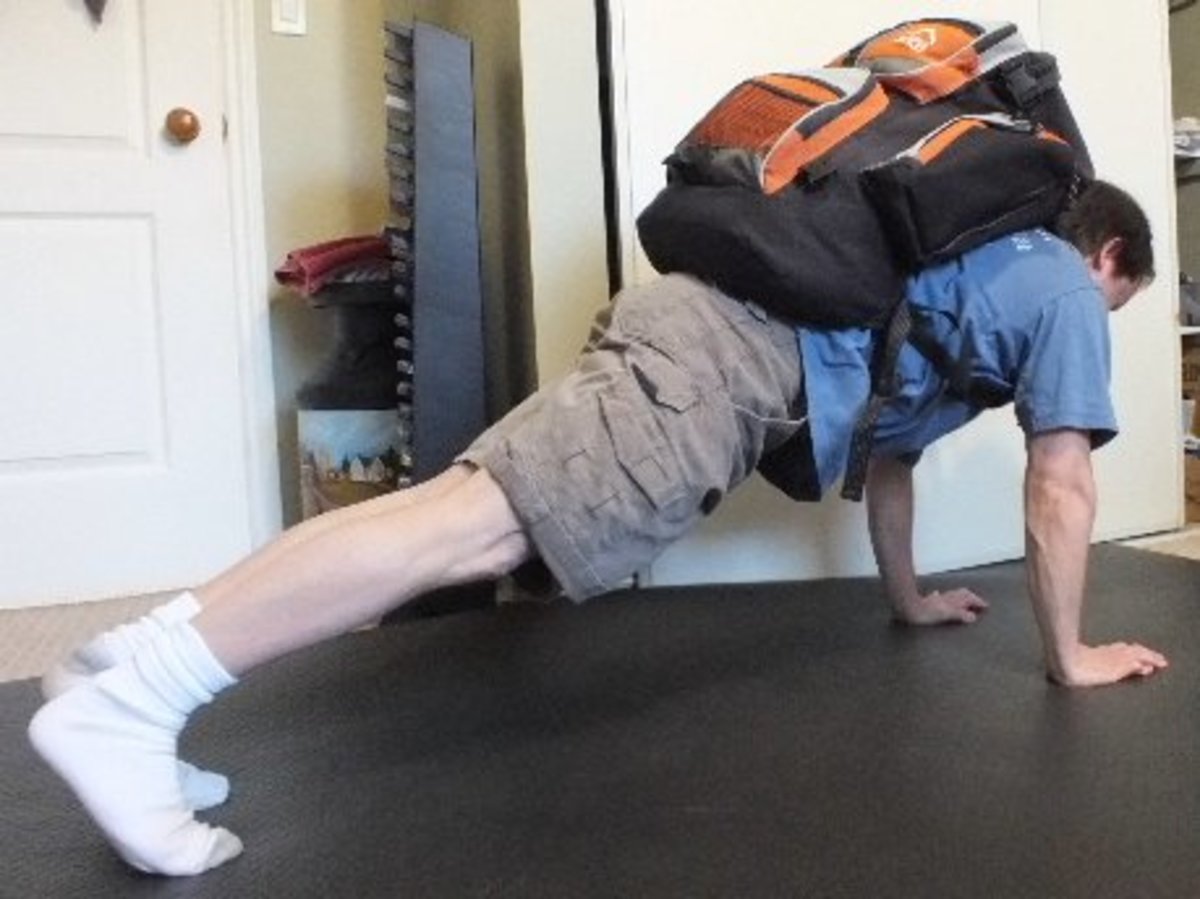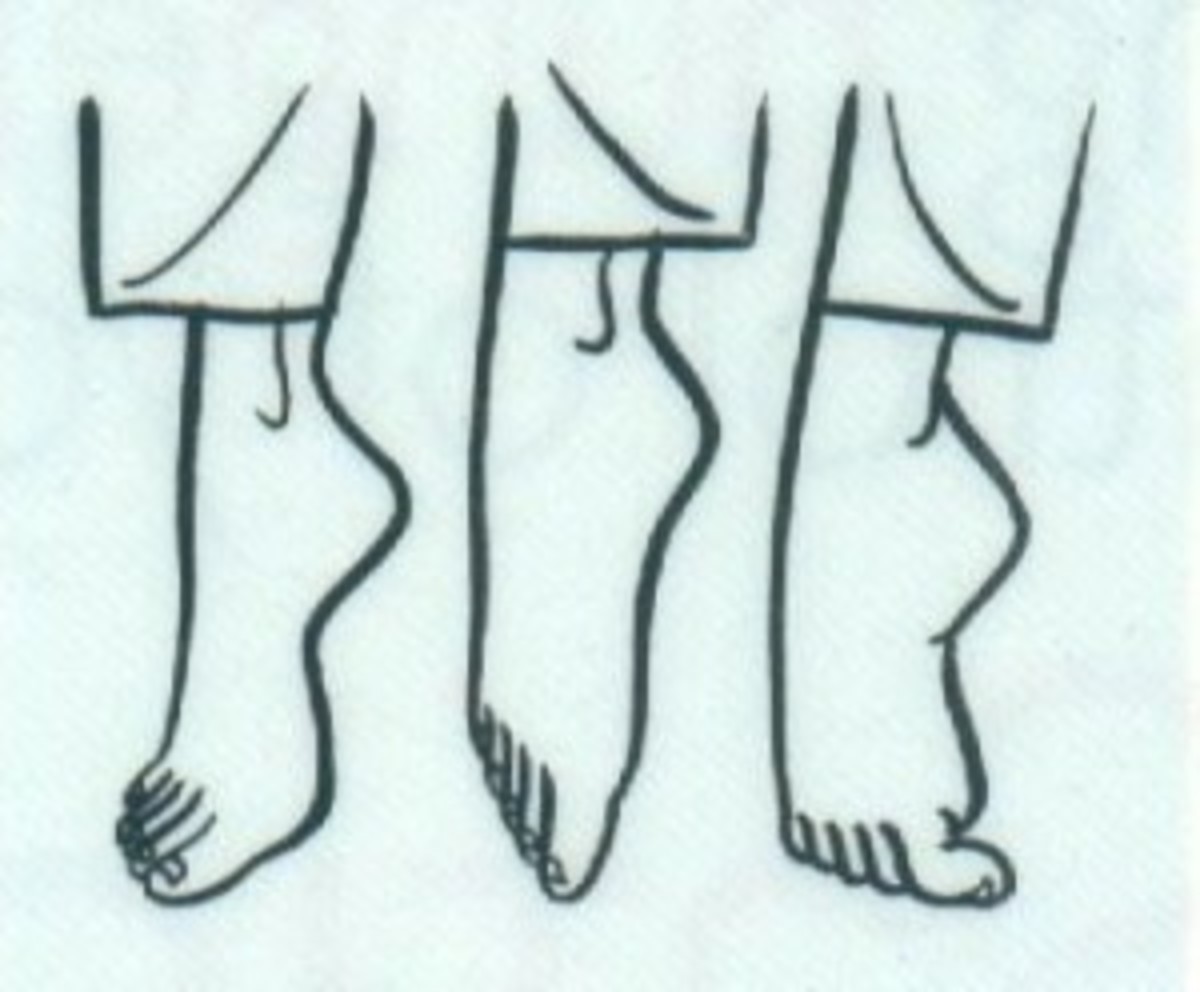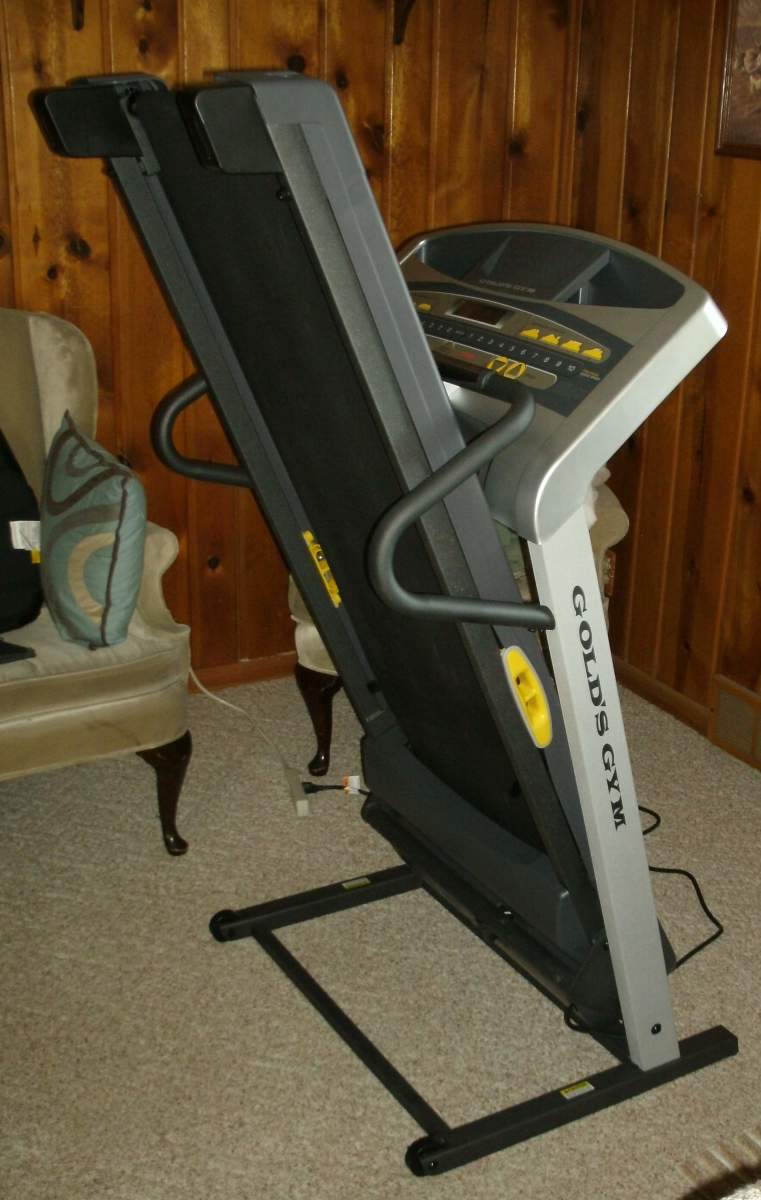Old time Physical Culture and strongmen
The 19th century saw rise to what became know as Physical Culture. The Industrial Revolution had created a worldview that middle classes were becoming diseased, partially because of their decline in manual labour and partially because, no doubt, many people noticed an apportunity to make money selling personal training and fitness manuals. None the less, the diseases of affluence which afflicted the more sedentary of the rising middle classes gave rise to a number of exercise systems that promised (much like today's do) to make one healthy and strong, with muscles to show for it! Now this was also the heyday for carnivals and music halls and travelling circusses. Strong men were in no short supply and each had his own training method, though many of these were drawn from earlier Greek and Roman regimes. After a while, the relative ease of mass producing printed materials created a set of strong men and physical culturists who sold their wares through mail order. Some of the activities included the use of Indian Clubs, medicine balls, dumbells, heavy staffs and other contraptions (such as spring loaded dumbbells popularised by Sandow).
Of course, like anything, the glut of information and competing ideas gave rise to a Battle Of The Systems - a great crontroversy that raged between the 1830s and 1920s which tried to establish which system of exercise and calisthenics was the "best". The most prevalent systems that competed were German Gymnastics, Swedish Gymnastics, Delsarte System of Physical Culture, American Gymnastics and Sargent System.
Anyway, the whole era and approach to exercise is very interesting and some of the more colorful characters that helped popularise and promote physical culture are briefly outlined below. These guys really gave rise to exercise as the multi million dollar industry it is today, selling everything from equipment to manuals to personal training. And even though the style and presentation has change a lot over the years, you can't knock the old time strongmen. Their strength was functional, even if their actual instruction manuals are filled with rediculously posed pictures of them flexing (fig leaves feature - I kid you not!). Some of these old-time methods are becoming more and more popular today. Hopefully without the over the top "I am Adam" type photography.
Apollon or Louis Uni (1862 - 1928)
Louis Uni was a French strongman who was especially famous for grip strength.
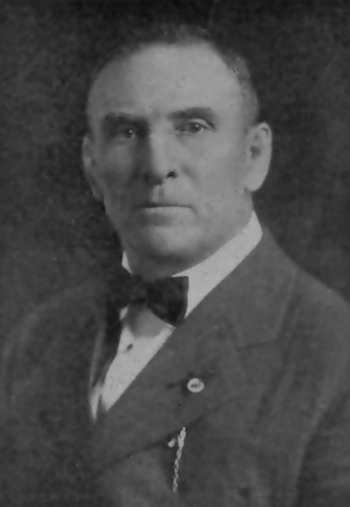
Farmer Burns or Martin Burns (1861 - 1937)
Farmer Burns is one of the most well known catch-as-catch-can wrestler who, after having an illustrious wrestling carreer, spent his time teaching wrestiling to the likes of Frank Gotch. Burns developed a mail-order fitness manual called "The Lessons in Wrestling and Physical Culture" which presented almost 100 pages on fitness. Farmer Burns' basic workout consisted of three phases - a warm up which included calisthenics and stretches, a strength phase which used dumbbells for resistance and some aerobics and a third phase which used a partner for resistance. The routine is intense, but excellent for overall conditioning.
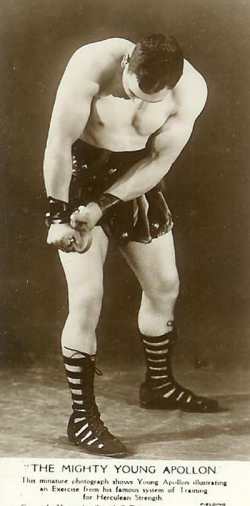
The Great Apollon or J. C. Tolson
Tolson took his stage name from his hero Louis Uni. He was an amazing strongman who would break chains and bend short metal bars as well as nails into horseshoe shapes. Tolson was originally from Yorkshire. His exercise program involved using various sizes of pre-bent horseshoe shaped metal bars which were used essentially as apparatus for isometrics, for example, squeezing the "Appollon bar" to help develop grip strength.


Eugen Sandow (1867 - 1925)
Much can and has been written about Eugen Sandow - a Prussian by birth, he fled in 1885 to avoid being conscripted to the military. He found his way to London, and from there, to fame. He is often regarded as the father of modern bodybuilding and wrote extensively on the subject of physical culture. Although he was originally a strongman, the theatre directors of the shows that Sandow was in noted that people tended to obsess over Sandows bulging muscles even more than his feats of strength. Sandow started doing choreographed pose sequences which were named "muscle display performances" which we see today in bodybuilding competition. Sandow had excellent control over his physique and could very easily flex individual muscles. His physical training approach hinged on the idea of gaining individual control over the muscles and being able to flex individually muscles whilst keeping surrounding muscles relaxed - for example flexing the bicep which keeping the deltoid relaxed. Sandow created an Institute of Physical Culture which was an early gym for bodybuilders set up in 1897. Sandow firmly believed in the Gecian Ideal, going so far as to measure ancient sculptures to attempt to emulate their proportions to create a formula for the perfect body. His books "Strength and how to obtain it" and "Sandow's system of physical training" specify quite precicely the ideal weights and reps to use and perform for various exercises to create his ideal body. He also created and sold hand weights that contained springs in them; the idea being that squeezing the weights as you performed your exercises would better enable you to note and use the correct muscles for each exercise.
In fact, some controversy surrounds Sandow. Though he was perhaps the most famous of the physical culturists, he was also a master marketer who was neither named Eugen Sandow nor was he Prussian. The man we know as Sandow, so famous that he had his own brand of cocoa was actually a German named Frederich Muller who left his country to dodge the draft. He was an acrobat, a wrestler, beachfront gigolo and model for some time before becoming famous for his muscles. Sandow, when he found his way to London answered a strongman challenge, defeating a strongman named "Samson" and inheriting his act. Again, this official story is somewhat shy of the truth, none the less, Sandow was on his way to riches.
Alois Swoboda (1873 to 1938)
Swoboda was born in Vienna and immigrated to the USA and though little is known about Swoboda, Charles Atlas is quoted as saying that he learned everything he knew from Swoboda. Swoboda's course uses muscle flexing and tensing exercises that are somewhat like dynamic tension - not to be confused with isometrics - instead movements are done with muscles fully tensed though not pitted against each other. Swoboda became a millionaire at just 28. Of course he wasn't all there, some say, given his other courses such as "Conscious Evolution" which claimed to allow one to regrow lost limbs through will-power alone.
Sanford Bennett
Sanford Bennett is an interesting fellow. He had, at the age of 50, sucumbed to the disease of affluence and was in poor health. He suffered from numerous chronic aches pains and complaints and decided to do something about it. He devised a set of exercises that were to be done before getting up in the morning....that's right exercises right there in the bed, before you get out of it. There are 35 different exercises which combine dynamic tension and massage and after doing them for a few years, he had cured himself of all manner of ills. When he went to the doctors at 70, he was pronounced in better shape than men in their 40s and 50s. He wrote a book called "Exercising in Bed" and another called "Old Age - Its Cause and Prevention".
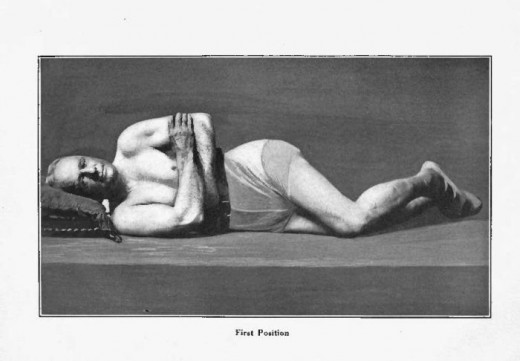
Charles Atlas
Atlas was born Angelo Siciliano in Southern Italy. He moved to America with his parents in his teens and took up bodybuilding after seeing statues of the ancient Greek Gods. In America, Angelo took the name Charles and worked as a leather worker. He eventually legally changed his name to Charles Atlas to fully embrace his brand. Atlas is famous for his adverts - that of a 97lb weakling having sand kicked in his face. You can't go two minutes in the exercise industry without knowing about Charles Atlas. Like the strongmen before him, Atlas produced a mail order course which promised to transform your body from skrawny to buff.
The Atlas method was based on Dynamic Tension and sold millions and millions of copies - Rocky Marciano and Joe Louis both used his system which seems to be based on earlier work by Swoboda who Atlas credits as his mentor. The Dynamic Tension program consists of 12 lessons. Dynamic tension was popular in Atlas' day, though the story he tells is that while training, he visited the zoo and watched the lions and tigers. He decided that lions and tigers use dynamic tension to build their strength. What really put Atlas' system above others of his day was his advertising - the familiar scene of the bully humiliating our hero who then goes away and uses the Atlas system to create an enviable physique, returning to the original scene of the ad and taking revenge, winning back his girlfriend. The advert had various incarnations and was featured in many comic books. It clearly struck a chord with its target audience.
In a strange turn of history, Atlas posed as a model for many stautes throughout his life and as such, he, in a way, became what originally inspired him to start training. Atlas always encouraged his fans and customers to write to him and he was, by all accounts, extremely hospitable into his old age and always had time for chat if you took the time to visit him.
